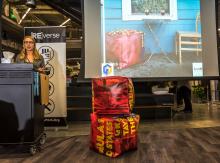Austin
In Austin, the creative sector is a vital component of the local economy. As state capital of Texas, with around 900,000 inhabitants, it is a place where small, local businesses thrive and has achieved prominence as a trendsetting global city at the intersection of art, music, and digital technology. Growing by 40% over the last decade, the region’s creative sector contributes more than US$ 4.35 billion in economic activity annually and represents nearly 49,000 permanent jobs.
With excellent higher education institutions – including the University of Texas – Austin has a reputation as a progressive city and attracts many creative professionals each year, many of whom have made the state famous with their songs, films, artwork, video games, and innovations. With this, events like SXSW Music, Film and Interactive, Austin City Limits Music Festival and Fantastic Fest have now become perpetual fixtures in the city’s cultural calendar.
From individual artists and creators to non-profit arts and culture organizations, the presence of many talents within Austin has spurred the growth of a rich and diverse cultural ecosystem. As Austin's creative sector continues to expand, its vitality is sustained by the many for-profit creative industries and including music, film, digital entertainment, galleries and festivals found here, as well as by the venues, funders, leadership, and audiences.
Due it to importance, the creative economy has been recognized as a priority in the city’s 2012 Imagine Austin Comprehensive Plan, in which creative industries and smart grid technology – in particular gaming, digital media, and film – are considered as essential levers to Austin local economy.
As a Creative City of Media Arts, Austin envisages:
- integrating media arts into the public sphere by commissioning local artists currently working in new media to manage public arts projects and events;
- promoting the development of media arts through the City Creative Content Incentives and Cultural Funding Programmes;
- enhancing virtual and local artists-in-residence programmes for artists working in new media and facilitating exchange programmes and internship opportunities for students;
- fostering exchanges between the Creative Cities of Media Arts, notably through the organization of trade missions involving creative ambassadors from the private sector;
- developing CITISTART (Cities for Innovation, Trade, and Investment and Science, Technology and the ARTs), a local network aiming to develop existing creative industries and creating employment opportunities in the technology and creative sectors; and
- establishing travelling exhibitions highlighting artists from other Creative Cities of Media Arts.







